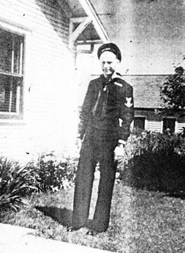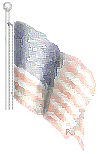PGM-18 was sunk April 8, 1945
Lloyd O. Aasen, motor machinist’s, Mate second class. 1506 Irene Street was one of the men rescued from the gun boat PGM-18, which was sunk off Okinawa by an underwater explosion, presumably an enemy mine. The gunboat was blown up while supplying fire support for several minesweepers, clearing an important landing area near Okinawa. Crewmen on nearby ships said the gunboat was blown clear of the water and from four to six feet in-the air by the concussion.
Source: Sioux City Journal, 1945
![]()
THIS IS A TRUE STORY
3003 Macomb Ave.
Sioux City, IA 51106-1542
Written by Lloyd O. Aasen, March 7, 1998
We (Navy Crew) were stationed on the PG 1265, on duty with Norwegian and Dutch ships,doing anti-submarine duty near Iceland. As the submarine threat was about over, we were ordered to Miami. There the small gear and depth charges were taken off the ship, and guns were installed all over the ship - 3 inch Forward, twin 40 mil. Sofors, twin 20 mm Orel icons, twin 50 Cal. machine guns, plus small machine guns. We became the PGM-18.
We then went through the Panama Canal and became part of Pre-invasion Forces that protected Minesweepers and under-water demolition men as the "Splinter Fleet: We were on pre-invasion duty at Okinawa in March 1945 helping to clean up mines. We were to protect the mine-sweeps as they cleared the beaches for invasion. The invasion was April 1 (Easter Sunday, 1945) and we stood by while every ship fired at the shore (the invasion was actually at a different place). There were several landing sites (planned) that kept the Japanese guessing.
We protected the Mine-sweeps in the daytime, and the Hospital-and Troop ships at night. The Kamikazes were very active, and they were smart pilots! At night they would fly between columns of our ships. We Would shoot at them and, of course, we hit our own ships. So much for friendly fire!
April 8 was General Quarters. Just, before daylight, and things were quiet. The Japs had been shooing at us the days before, and the Battleship Pennsylvania blew up the tanks that were shooting at us. That Morning the sun came up and everything was quiet. Some of the Crew went below to eat breakfast. I was on the fantail with the twin 50's. My job usually was in the engine room, but I was Damage Control so was on deck with one of the twin 50's and the smoke generator. I had taken off my life jacket, and hung it on the gun.
The Captain phoned to have the smoke generator ready, so checked it out and ran a line from my gun to the smoke generator, so I could get smoke when he ordered it.
I had my helmet between my knees, and was holding the phone to put on my ears when the ship blew up. I was blown off the ship, and everything was on fire. (If I had had the phone on
then, I, would have had my neck broken.) I remember thinking that I hoped I wouldn't hit anything! The first time I came up (for a breath of air), the sea was afire. I splashed
water and got a breath of air, and swam under water until I couldn't see flames above me. As the weather was cold, I had on a sweater and foul weather jacket, and no life jacket. I started to swim towards our Ship when a plane came over us, and I thought it was the Japs going to strafe us, but it was one of our planes -- and they dropped life jackets. BUT it is impossible to get into a life jacket when you are in the water! About that time one of the Mine-sweeps turned towards me and just as, I was getting a hold of the rope, the whole front of the ship blew up! It was a mine. It seemed that I went _down a hundred feet, and when I came up the front end of the Mine-sweep was just pieces of wood - like match sticks! Then another Mine-sweep came towards us, and I swam to get out of the way.
Our ship had sunk by then. I can't say I was scared, but I remembered saying to myself: "What the hell am I doing 6,000 miles from home -- swimming in the Pacific Ocean?"
After our ship went down so deep, the life-rafts automatically released, and one came up not too far from where I was. The Gunners mate and Yeoman reached the raft the same time as I did. We were all sick from the salt water and diesel fuel, and pooped, so we had a hard time getting on the raft. We were on a current that was taking us into Buckner Bay and we thought we ought to stay away (from there). The other two men had lost their knives - - I was the only on to have a knife, so I was elected to get into the water to get the oars from under the raft! (The raft was upside down) After I got the oars, they helped me back onto the raft and we started to row out to sea.
A Destroyer approached from seaward. They dropped a whale boat, and picked us up. Then we went all over and into Buckner Bay to pull up other survivors!
On getting aboard the Destroyer, the Officer of the Deck wanted my life jacket -- he said he would give me another! While this was going on, we looked at the water, and there must have been 50 sharks swimming about! The sharks got most of the fellows.
We got hot showers, and they washed our clothes and we had no shoes, so they took us to Kamarette where there were many damaged ships. We were put aboard the Henriko, a Troop Transport that had been hit by the Kamikazes.
Everything above the main deck was burned out, and
all the Navy Officers and most of the Army Officers were
killed. We rigged phones to the rudder post, and took
off, alone, for Pearl Harbor!
Afterwards is another Story!
CONTINUATION OF STORY #1
Sequal to This Is A True Story" April 1998
When we arrived at Pearl Harbor, we were given shoes and a white uniform, then we took off for the USA. We landed at Treasure Island in San Francisco Bay. We were assigned a Yeoman who told us we had 3 days to get all our shots and new uniforms before we went on 30-day survivor leave. We got some pay, but only enough to cover the time our Ship was sunk, so we had to try to get tickets to Sioux City or Omaha-- no train rides were available. I was lucky to get a ride on a Bus to Omaha where Ruth picked me up. She-had gotten enough gasoline to drive to Omaha and back. Gasoline was rationed in the U.S.
After 30 days I turned in at the Navy Station in Omaha -- no more leave until the war was over. There they had a Pullman ticket for me to Treasure Island with a destination number that I had never seen. Upon asking where the destination was, I was told I would find out when I got to California.
The train was 20 hours late, so I was in the brig immediately. The Officer turned me loose when I said I couldn't beat the train. I still didn't know what the destination number was, but a couple of days later I was put in a stockade with double fence and told, "no writing or calling home, or calls to anyone. There was about 160 of us, and we were put aboard the “Gasconade” which was a new Victory ship. We found out we were all Petty Officers, and we were going to the Philippines.
We landed at Tacklobin, San Pedro Bay, Philippines. A Boatsen mate and a Motor Mach (me) were put on LEMS (landing craft for personnel, tanks, and trucks). We were to meet our C.O. in the middle of the Bay every Tuesday morning. The rest of the time we were on our own -- steal your food and live aboard the LCMs. Our C.O. was a Lt. Com- mander who had been in Normandy D-Day as a landing master.
He told us that we were to land the first wave in Japan. He thought the invasion would be in the fall "Oct. or Nov." He said our casualties would be 75 or 80 percent -- but we were all experienced and that was why we were chosen!
The night the first (atomic) Bomb was dropped, about 60 of us were routed out at midnight and put aboard the Orvetta, an old cruise liner, and we were on our way to Japan. We didn't know what kind of weapon was dropped, but we heard about the second one. When we got to the Ireland Sea, we were. sent in to scout the beaches. With no soldiers or Marines around (they weren't ready for the invasion), we went in alone -- about twenty landing craft (LCMs) with two men on each. We just about got to Wakijama when the Ships radioed for us to stay in, find a place to get out of the weather as there was a typhoon coming and the Ships wanted to get out to sea so they would have some room to maneuver. So we landed and were the only USA people in that part of Japan! All we had was side arms and K Rations (see K Rations note below). The Japanese kids were hungry and as they watched us eat our "K" Rations we just had to give our food to them! Our LCMs with the 50-cal. machine guns sunk at the piers during the storm.
After the storm, Army and Marines came in with the ships along with the Navy from the Aluitions and other points. Our LCMs were taken over by young recruits and we were put on Shore Patrol duty.-- keeping order among our Service people.
Most of the fellows were sent home quickly, as they had enough points, but my records were lost when our PGM sank, and I couldn't prove that I had been out there before and also in the Atlantic.
But I finally got to go home! After my discharge in Minneapolis, MN, I arrived in Sioux City 3 January '46 with no pay coming. I almost got into the Korean War trying to get paid.- Several Sioux Cityans with my Rate were called up and spend two years in Korea.
** K-Rations for the Navy were sealed-up boxes that fit into pockets of our landing gear. These boxes contained a can of SPAM, 2 'biscuits', a couple sticks of gum, a couple cigarettes, and some powder to mix with water to drink.
Source: Personal memoirs of Lloyd O. Aasen--1998.
3003 Macomb Ave.
Sioux City, IA 51106-1542
![]()

